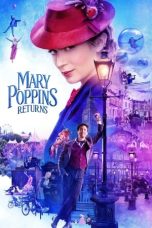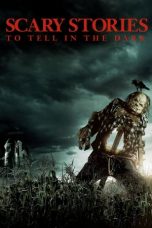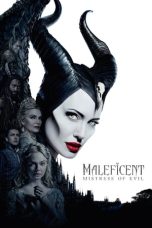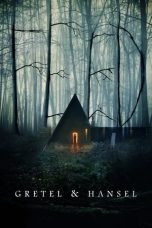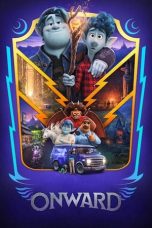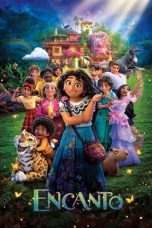In 1630, a farmer relocates his family to a remote plot of land on the edge of a forest where strange, unsettling things happen. With suspicion and paranoia mounting, each family member’s faith, loyalty and love are tested in shocking ways. The Witch (2016)
The
Witch (stylized as The VVitch, and subtitled A New-England Folktale) is a 2015 folk horror film written and directed by Robert Eggers in his feature directorial debut. It stars Anya Taylor-Joy in her feature film debut, alongside Ralph Ineson, Kate Dickie, Harvey Scrimshaw, Ellie Grainger, and Lucas Dawson. Set in 1630s New England, its plot follows a Puritan family who encounter forces of evil in the woods beyond their farm.
An international co-production of the United States and Canada, the film premiered at the Sundance Film Festival on January 27, 2015, and was widely released by A24 on February 19, 2016. It was a critical and financial success, grossing $40 million against a $4 million budget, and is considered by some to be one of the best horror films of the 2010s.
Plot
In 1630s New England, English settler William and his family—wife Katherine, teenage daughter Thomasin, preteen son Caleb, young fraternal twins Mercy and Jonas, and unborn baby Samuel—are banished from a Puritan settlement over a religious dispute. They build a farm near a large, secluded forest, and Katherine bears her fifth child, Samuel. While under Thomasin's care, Samuel abruptly disappears. It is soon revealed that a
Witch has stolen and killed Samuel to use his body to make a flying ointment.
Devastated by the loss, Katherine spends her days crying and praying. William takes Caleb hunting in the woods, where Caleb wonders if the unbaptized Samuel went to Heaven. In response, William discloses that he secretly traded Katherine's prized silver cup for hunting supplies. At the farm, the twins play with the family's billy goat, Black Phillip, who the children say talks to them. Katherine blames Thomasin for misplacing her silver cup and holds her responsible for the loss of Samuel. That night, the children overhear their parents arguing about their possible starvation, and making plans to send Thomasin away to serve another family.
The next morning, Thomasin and Caleb sneak into the forest to check a trap. Their dog Fowler chases a hare, with Caleb in pursuit; the hare frightens their horse, which throws Thomasin to the ground and knocks her unconscious. Caleb becomes lost and discovers Fowler's disemboweled body. Delving further into the thicket, he discovers a hovel from which the
Witch, disguised as a seductive young woman, emerges and kisses him. Thomasin awakens and finds her way home by following William's voice. As Katherine berates Thomasin for taking Caleb into the woods, William defends Thomasin by reluctantly admitting that he sold the cup.
That night, Caleb returns to the farm naked, delirious, and mysteriously ill. Katherine suggests that Caleb has fallen victim to witchcraft and prays for him. The next day, Caleb goes into violent convulsions and vomits a whole apple, before passionately proclaiming his love for Christ and dying peacefully. The twins accuse Thomasin of practicing witchcraft, but she in turn accuses the two of them for their supposed conversations with Black Phillip and confronts their father on his intentions to send her away. Angered by his children's behavior, William locks them in the goat house.
In the middle of the night, the twins and Thomasin awake to find the
Witch drinking the blood of a nanny goat. In the house, Katherine has a hallucinatory vision in which Caleb and Samuel have returned. In her dream, she takes Samuel and nurses him, but in reality, a raven is pecking at her breast. At dawn, William finds the goat stable destroyed, the goats eviscerated, the twins missing, and an unconscious Thomasin with bloodied hands. As she stirs, Black Phillip gores and kills him. An unhinged Katherine blames Thomasin for everything that has happened and tries to strangle her. Thomasin tearfully kills her mother in self-defense with a billhook.
Now alone, Thomasin enters the goat house and urges Black Phillip to speak to her. The goat responds in a human voice and offers her the life she desires. When she accepts, he materializes into a handsome, black-clad man, tells her to remove her clothes, and sign her name in a book. Thomasin, accompanied by Black Phillip as a goat, then enters the forest nude, where she finds a coven holding a Witches' Sabbath around a bonfire. The witches begin to levitate. Thomasin joins them, laughing hysterically as she ascends above the trees.
Cast
Production
= Development
=
Eggers, who lived in New Hampshire, was inspired to write the film by his childhood fascination with witches and frequent visits to the Plimoth Plantation as a schoolboy. After unsuccessfully pitching films that were "too weird, too obscure", Eggers realized that he would have to make a more conventional film. He said at a Q&A, "If I'm going to make a genre film, it has to be personal and it has to be good." Director Alfonso Cuarón read the screenplay in 2013, saying it made him "more than anything, curious." The production team worked extensively with British and American museums, as well as consulting experts on 17th-century British agriculture. Eggers wanted the set constructed to be as historically accurate as possible, and therefore brought in a thatcher and a carpenter from Virginia and Massachusetts, respectively, who had the proper experience building in the style of the film's period.
Although Eggers wanted to film the picture on location in New England, he chose to film in Canada instead due to favorable tax incentives. This proved to be something of a problem for him, because he could not find the forest environment he was looking for in the country. He eventually began scouting "off the map" and found a suitable location (Kiosk, Ontario) that was "extremely remote"; he said that the nearest town "made New Hampshire look like a metropolis".
The casting took place in England, as Eggers wanted authentic accents to represent a family newly arrived in colonial Plymouth.
= Filming
=
To give the film an authentic look, Eggers shot only "with natural light and indoors, the only lighting was candles". He also chose to stylize the film's title as "The VVitch" (with two "V"s instead of a "W") in the title sequence and on posters, stating that he found this spelling in a Jacobean-era pamphlet on witchcraft, among other period-texts.
In December 2013, costume designer Linda Muir joined the crew, and consulted 35 books in the Clothes of the Common People in Elizabethan and Early Stuart England series to plan the costumes, which were made with wool, linen, and hemp. She also lobbied for a larger costume budget.
A troupe of Butoh dancers played the coven of witches at the end of the film, creating their own choreography.
= Music
=
Mark Korven wrote the film's score, which aimed to be "tense and dissonant" while focusing on minimalism. Eggers vetoed the use of any electronic instruments and "didn't want any traditional harmony or melody in the score"; so Korven chose to create music with atypical instruments, including the nyckelharpa and waterphone. He knew the director liked to retain a degree of creative control, so he relied on loose play centered on improvisation "so that [Eggers] could move notes around whenever he wanted".
Track listing
Themes
According to analysts, the film's impact is delivered not through scares, but by the effect of ambience and scenography. This is stylistically represented by the film's use of expressionist lighting, the use of different kinds of camera to draw thematic limits, the editing employed to hide horror from the main sight, and the soundtrack's sonic dissonance accompanying instrumental scenes. Samuel's physically impossible disappearance at the beginning of the film introduces the viewer to the film's atmosphere.
The film's plot orbits around a psychological conflict, using a repressive, patriarchal portrayal of Puritan society and the dark, murderous liberation of the witches. The main female character, Thomasin, harbors worldly desires that differ from those of her conventionally Christian family, yearning for independence, sexuality, acceptance, and power. While her father and the Christian God fail to fulfill her needs, Satan speaks personally to her, offering earthly satisfaction. Therefore, with the demise of her family and the rejection of the Puritan society, Thomasin joins Satan and the witches, her only alternative, in order to find her long desired control over her own life. Her nudity in the last scene reflects her act of casting off the bonds of her previous society.
The difference between both options, nevertheless, is rendered blurred by an evocation of equal religious extremism. This is first felt in the architecture of the family's own home, which ironically resembles an archetypal
Witch's cottage itself, hinting at the gradual reveal that evil is already installed in them. On the opposite side, Satan's temptation of Thomasin also acquires traits of ideological grooming, slowly alienating her from her family. At the end, despite her newfound cause and ecstatic laugh at the coven, Thomasin has not escaped her previous religiosity, but merely changed its direction, turning to murder in exchange for freedom.
The symbolic conflict between civilization and nature is also present in all the aspects of the film. The family lives next to a dark forest, a place tied to witchcraft in their culture, which underlines the conflict between their civilized, patriarchal religion and the Gothic, wild natural world that surrounds them. The forest, as well as the state of nudity, are associated with monstrosity, with the untamed wilderness where forbidden liberation and sexuality emerge. Accordingly, Caleb returns nude after being seduced by the
Witch, the witches themselves perform their acts while naked, and Thomasin eventually adopts this code upon joining them. At the end of the film, nature triumphs over its adversary, with the Pan-like Black Phillip goring the axe-wielding William in a metaphor for man being consumed by the wild.
Release
The film had its world premiere on January 27, 2015, at the 2015 Sundance Film Festival. It was screened on September 18, 2015, in the Special Presentations section of the 2015 Toronto International Film Festival.
A24 and DirecTV Cinema acquired the film's distribution rights. As it received very positive reactions in advance screenings, the studios decided to give the film a wide theatrical release in the United States, which occurred on February 19, 2016.
The film was released on Blu-ray and digital HD in the United States on May 17, 2016, by Lionsgate Home Entertainment. Special features on the discs include outtakes, an audio commentary by Eggers, the making-of documentary short The
Witch: A Primal Folktale, and a 30-minute question-and-answer session featuring Eggers, Taylor-Joy, and historians Richard Trask and Brunonia Barry, which was filmed in Salem, Massachusetts, after a screening of the film. A 4K Ultra HD Blu-ray of the film was released on April 23, 2019.
Reception
= Box office
=
The
Witch grossed $25.1 million in the United States and Canada and $15.3 million in other territories, for a worldwide total theatrical gross of $40.4 million.
In the United States and Canada, the film was released alongside Risen and Race, and was projected to gross $5–7 million from 2,046 theaters in its opening weekend. It made $3.3 million on its first day, and $8.8 million in its opening weekend, finishing fourth at the box office behind Deadpool ($56.5 million), Kung Fu Panda 3 ($12.5 million), and Risen ($11.8 million).
= Critical response
=
On review aggregator website Rotten Tomatoes, the film has an approval rating of 90% based on 336 reviews, with an average score of 7.8/10; the website's "critics consensus" reads: "As thought-provoking as it is visually compelling, The
Witch delivers a deeply unsettling exercise in slow-building horror that suggests great things for debuting writer-director Robert Eggers." On Metacritic it has a weighted average score of 84 out of 100 based on 46 critics, indicating "universal acclaim". Audiences polled by CinemaScore gave the film an average grade of "C−" on an A+ to F scale, while PostTrak reported filmgoers gave it a 55% overall positive score and a 41% "definite recommend".
Writing in Variety, Justin Chang commented that "A fiercely committed ensemble and an exquisite sense of historical detail conspire to cast a highly atmospheric spell in The
Witch, a strikingly achieved tale of a mid-17th-century New England family's steady descent into religious hysteria and madness." Yohana Desta of Mashable stated that The
Witch is a "stunningly crafted experience that'll have you seeking out a church as soon as you leave the theater". Peter Travers, in his Rolling Stone review, gave the film 3½ stars, and wrote of the film: "Building his film on the diabolical aftershocks of Puritan repression, Eggers raises The
Witch far above the horror herd. He doesn't need cheap tricks. Eggers merely directs us to look inside." Stephanie Zacharek summarized the movie in Time as "a triumph of tone", writing that "Although Eggers is extremely discreet—the things you don't see are more horrifying than those you do—the picture's relentlessness sometimes feels like torment." Gregory Wakeman, writing for CinemaBlend, gave it five out of five stars, writing that "[its] acting, lighting, music, writing, production design, cinematography, editing, and direction all immediately impress. While, at the same time, they combine to create an innately bewitching tale that keeps you on tenterhooks all the way up until its grandiose but enthralling finale." Ann Hornaday wrote in The Washington Post that the film joins the ranks of horror films such as The Exorcist, The Omen, and Rosemary's Baby, saying that The
Witch "comports itself less like an imitator of those classics than their progenitor", which is "a tribute to a filmmaker who, despite his newcomer status, seems to have arrived in the full throes of maturity, in full control of his prodigious powers." Writing for Best of Netflix, Debiparna Chakraborty praised the narrative, saying "The
Witch is a mesmerising exploration of the mundane horrors often spawned by barren isolation and religious fervour." Independent filmmaker Jay Bauman of RedLetterMedia named it his favorite film of 2016, enthusiastically stating: "I love it, I think it's a masterpiece... It's a first-time filmmaker which is shocking to me...because it feels like it's made by someone who's been making movies for decades who's a master of their craft".
However, some critics, as well as audiences, were less pleased with the film. Ethan Sacks of the New York Daily News wrote that the film does not suffer from the cinematography, acting, or setting, and early on it "seems that The
Witch is tapping a higher metaphor for coming of age...or religious intolerance...or man's uneasy balance with nature...or something. It doesn't take long into the film's hour and a half running time, however, to break that spell." Critics noted that the film received backlash from audiences regarding its themes and slow approach to horror. Lesley Coffin criticized A24, saying it was "a huge mistake" to market The
Witch as a terrifying horror film:
Not because it doesn't fit into the genre of horror, but because of the power of expectations. The less you know about this movie the better your experience will be, but everyone who saw it opening weekend probably walked in with too much knowledge and hype to really get as much out of it as they could have if the film had the veil of mystery.
HitFix writer Chris Eggertson blamed mainstream Hollywood more generally for the unenthusiastic response of some audiences, saying that The
Witch "got under [his] skin profoundly, but it did not have the moment-to-moment, audience-pleasing shocks that moviegoers have become accustomed to thanks to movies like Sinister and The Purge and Paranormal Activity and every other Blumhouse and Platinum Dunes title in the canon."
Horror authors Stephen King and Brian Keene both reacted positively to the film. King tweeted significant praise for the film, writing: "The
Witch scared the hell out of me. And it's a real movie, tense and thought-provoking as well as visceral." On social media, Keene stated: "The
Witch is a gorgeous, thoughtful, scary horror film that 90% of the people in the theater with you will be too stupid to understand."
Religious
Julia Alexander of Polygon wrote that The
Witch "asks people to try and understand what life would have been like for a family of devout Christians living in solitude, terrified of what may happen if they go against the word of God". In The Atlantic, Alissa Wilkinson stated that many films featured at the 2015 Sundance Film Festival—The
Witch, along with Last Days in the Desert, Don Verdean, and I Am Michael—reveal a "resurgence of interest in the religious", and described The
Witch as "a chilling circa-1600 story of the devil taking over a devout, Scripture-quoting family". Eve Tushnet commented in an article in TAC, which was also published in First Things, that The
Witch's view of witchcraft is "not revisionist" and further said the film is "pervaded by the fear of God. There are occasional references to His mercy but only as something to beg for, not something to trust in".
A review by Adam R. Holz in Plugged In, a publication of the conservative Christian organisation Focus on the Family, heavily criticised the film, stating that:
William is absolutely devoted to leading his family in holiness and the ways of the Lord, which should be a good thing. But the fruit of William's rigorous focus on dogmatic piety isn't a lifting of burdens, which we're told should happen in Matthew 11:30, or a joyful celebration of living life to the fullest, as is referenced in John 10:10; rather, it is deep fear and morbid meditations on hell, damnation and the forces of spiritual darkness.
Josh Larsen of Think Christian, however, offered a different Christian explanation of the conclusion of the film, writing: "When it comes to encountering evil, the family in the film veers wildly back and forth between 'triumphalism' and 'defeatism,' two theological extremes", and "in refusing to allow for grace, they become easy pickings for the
Witch."
Emily VanDerWerff of Vox wrote:
A24 could have just as easily courted the approval of, say, theologians who have a fondness for Calvinism. The
Witch takes place in Colonial America, and it unfolds from the perspective of period Christians who genuinely believe the woods around their tiny farm contain some sort of evil, supernatural being—and are ultimately proved correct.
= Accolades
=
See also
Witch trials in the early modern period
References
External links
The
Witch at IMDb
‹The template AllMovie title is being considered for deletion.› The
Witch at AllMovie
The
Witch at Metacritic
The
Witch at Rotten Tomatoes


